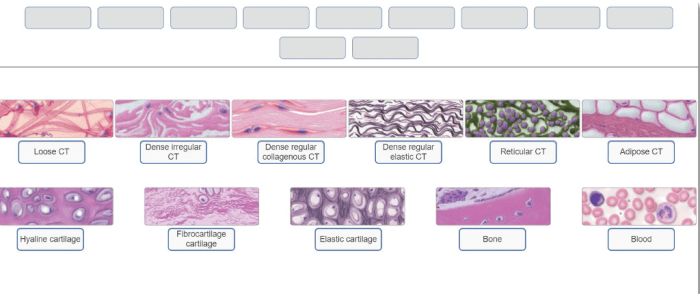Chapter 2 chemical basis of life – Embarking on a scientific odyssey, Chapter 2: Chemical Basis of Life invites us to unravel the intricate tapestry of elements and molecules that constitute the very essence of living organisms.
From the fundamental building blocks of life to the dynamic processes that govern cellular machinery, this chapter delves into the fascinating world of biochemistry, shedding light on the profound connection between chemistry and biology.
Chemical Composition of Living Organisms
Living organisms are composed of various chemical elements that perform essential functions. These elements are organized into biomolecules, which are the building blocks of life.
Fundamental Elements
The primary elements found in living organisms are carbon, hydrogen, oxygen, nitrogen, and phosphorus (CHNOP). These elements make up over 95% of the mass of most organisms.
| Element | Function |
|---|---|
| Carbon | Forms the backbone of organic molecules, including carbohydrates, proteins, lipids, and nucleic acids. |
| Hydrogen | Forms covalent bonds with other elements, particularly carbon, and participates in chemical reactions. |
| Oxygen | Forms covalent bonds with other elements and participates in respiration and metabolism. |
| Nitrogen | Essential for protein synthesis and is a component of amino acids and nucleic acids. |
| Phosphorus | Component of nucleic acids, cell membranes, and energy-carrying molecules like ATP. |
Water: The Solvent of Life
Water constitutes the majority of living organisms, playing a crucial role in various cellular processes and metabolism. Its unique properties make it essential for life on Earth.
One of the most significant properties of water is its ability to dissolve a wide range of substances. This characteristic makes it an excellent solvent, enabling it to transport nutrients, waste products, and other molecules throughout the body.
Cohesion and Adhesion
Water molecules exhibit cohesion, which is the attraction between water molecules, and adhesion, which is the attraction between water molecules and other substances. These properties contribute to the surface tension of water, allowing it to form droplets and facilitating its movement through capillary vessels.
Temperature Regulation
Water has a high specific heat capacity, meaning it can absorb or release a significant amount of heat without experiencing significant temperature changes. This property helps regulate body temperature in organisms, preventing rapid fluctuations that could harm cells.
Chemical Reactions
Water is a reactant or product in numerous chemical reactions that occur within cells. For example, it participates in hydrolysis reactions, which break down complex molecules into simpler ones, and dehydration reactions, which form new bonds by removing water molecules.
Carbohydrates
Carbohydrates are organic compounds composed of carbon, hydrogen, and oxygen, with a general formula of (CH 2O) n. They are the most abundant organic molecules in living organisms and serve as the primary source of energy for cells.
Carbohydrates are classified into three main groups based on their structure and complexity:
Monosaccharides
Monosaccharides are the simplest carbohydrates, consisting of a single sugar unit. They are classified based on the number of carbon atoms they contain:
- Triose:3 carbon atoms (e.g., glyceraldehyde)
- Tetrose:4 carbon atoms (e.g., erythrose)
- Pentose:5 carbon atoms (e.g., ribose, deoxyribose)
- Hexose:6 carbon atoms (e.g., glucose, fructose, galactose)
Disaccharides
Disaccharides are formed by the covalent bonding of two monosaccharides. Common disaccharides include:
- Sucrose:Glucose + Fructose
- Lactose:Glucose + Galactose
- Maltose:Glucose + Glucose
Polysaccharides
Polysaccharides are complex carbohydrates consisting of many monosaccharide units linked together. They serve as storage or structural components in organisms:
- Starch:A storage polysaccharide found in plants, consisting of many glucose units.
- Glycogen:A storage polysaccharide found in animals, consisting of many glucose units.
- Cellulose:A structural polysaccharide found in plant cell walls, consisting of many glucose units.
- Chitin:A structural polysaccharide found in the exoskeletons of insects and crustaceans, consisting of many N-acetylglucosamine units.
Lipids
Lipids are a diverse group of organic compounds that are insoluble in water but soluble in organic solvents. They are the main building blocks of biological membranes and play important roles in energy storage, hormone production, and other cellular processes.Lipids
are classified into four main types: phospholipids, steroids, fatty acids, and eicosanoids. Phospholipids are the most abundant type of lipid in biological membranes. They consist of a glycerol molecule with two fatty acids attached to the first and second carbon atoms and a phosphate group attached to the third carbon atom.
Steroids are another important type of lipid. They consist of a four-ring structure and include cholesterol, which is an important component of animal cell membranes. Fatty acids are long chains of carbon atoms with hydrogen atoms attached to them. They can be saturated, meaning they have no double bonds between the carbon atoms, or unsaturated, meaning they have one or more double bonds between the carbon atoms.
Eicosanoids are a group of lipids that are produced from fatty acids and have hormone-like effects.Lipids play an important role in forming biological membranes. The phospholipid bilayer is the basic structure of all biological membranes. It consists of two layers of phospholipids, with the fatty acid tails pointing inward and the phosphate heads pointing outward.
The fatty acid tails are hydrophobic, meaning they repel water, while the phosphate heads are hydrophilic, meaning they attract water. This arrangement creates a barrier that prevents water-soluble molecules from passing through the membrane.
Proteins: The Workhorses of the Cell
Proteins are large, complex molecules that play a crucial role in virtually every aspect of cellular life. They are essential for growth, development, and repair, and they perform a wide range of functions, including catalysis, transport, signaling, and structural support.Proteins
are composed of amino acids, which are linked together by peptide bonds. There are 20 different amino acids that can be combined in various sequences to form a vast array of proteins. The sequence of amino acids in a protein determines its structure and function.
Protein Structure
Proteins have four levels of structure: primary, secondary, tertiary, and quaternary. The primary structure is the linear sequence of amino acids. The secondary structure is formed by hydrogen bonding between amino acids, which causes the protein to fold into a specific shape.
The tertiary structure is formed by additional interactions between amino acids, such as disulfide bonds and hydrophobic interactions. The quaternary structure is formed when multiple protein subunits come together to form a larger complex.
Protein Classification
Proteins can be classified into two main groups: globular proteins and fibrous proteins. Globular proteins are soluble in water and have a compact, spherical shape. They typically perform catalytic, transport, or signaling functions. Fibrous proteins are insoluble in water and have a long, fibrous shape.
They typically provide structural support or protection.
Protein Functions
Proteins perform a wide range of functions in cells, including:* Enzymes:Catalyze chemical reactions.
Transport proteins
Transport molecules across cell membranes.
Signal transduction proteins
Transmit signals from outside the cell to the inside.
Structural proteins
Provide support and protection for cells.
Hormones
Regulate various bodily functions.
Antibodies
Protect the body from infection.
Nucleic Acids: The Carriers of Genetic Information: Chapter 2 Chemical Basis Of Life
Nucleic acids are essential molecules that carry the genetic information necessary for life. They are found in all living cells and are responsible for transmitting genetic information from one generation to the next.
Structure and Classification of Nucleic Acids
There are two main types of nucleic acids: deoxyribonucleic acid (DNA) and ribonucleic acid (RNA). Both DNA and RNA are polymers, meaning they are made up of a chain of smaller units called nucleotides. Each nucleotide consists of a nitrogenous base, a sugar molecule, and a phosphate group.
The nitrogenous bases in DNA are adenine (A), thymine (T), cytosine (C), and guanine (G). In RNA, thymine is replaced by uracil (U). The sugar molecule in DNA is deoxyribose, while in RNA it is ribose.
The sequence of nitrogenous bases along the nucleic acid chain determines the genetic information that is carried. The genetic code is read in groups of three nucleotides, called codons. Each codon corresponds to a specific amino acid, which is the building block of proteins.
Role of Nucleic Acids in Storing and Transmitting Genetic Information
DNA is the primary molecule responsible for storing genetic information. It is found in the nucleus of cells and is organized into chromosomes. When a cell divides, the DNA is copied so that each new cell has a complete copy of the genetic information.
RNA is involved in the transmission of genetic information from DNA to the ribosomes, where proteins are synthesized. RNA is also involved in other cellular processes, such as regulating gene expression and protein synthesis.
Enzymes: The Catalysts of Life
Enzymes are proteins that act as catalysts in biological reactions. They increase the rate of reactions without being consumed in the process. Enzymes are essential for life as they enable the efficient and controlled occurrence of chemical reactions within cells.
Enzymes work by lowering the activation energy required for a reaction to occur. Activation energy is the minimum amount of energy that must be overcome for a reaction to proceed. By lowering the activation energy, enzymes make it easier for reactions to happen, even at physiological temperatures.
Examples of Enzymes, Chapter 2 chemical basis of life
There are thousands of different enzymes, each with a specific function. Some examples include:
- Amylase: Breaks down starch into sugars
- Lipase: Breaks down fats into fatty acids and glycerol
- Protease: Breaks down proteins into amino acids
- DNA polymerase: Synthesizes new strands of DNA
- RNA polymerase: Synthesizes new strands of RNA
Frequently Asked Questions
What are the four main classes of biological molecules?
Carbohydrates, lipids, proteins, and nucleic acids
What is the primary function of enzymes?
To catalyze biochemical reactions and increase their rate
Why is water so crucial for life?
It serves as a solvent, participates in chemical reactions, and regulates temperature

